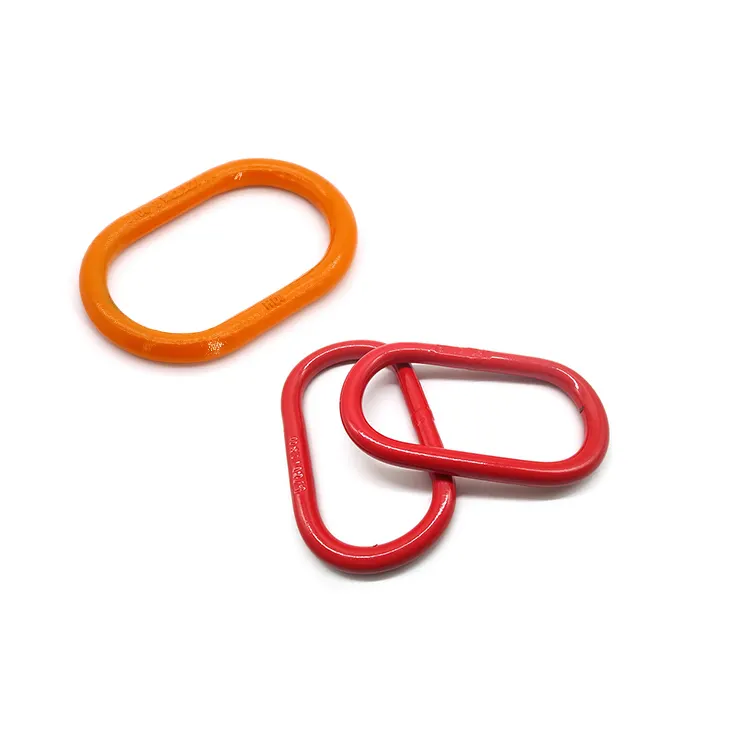ផលិតផល
A lifting hook is an essential component in material handling and lifting operations, designed to securely attach loads to lifting equipment such as cranes, hoists, or chains. The key features of a lifting hook include high-strength construction, typically made from forged alloy steel or other durable metals, ensuring it can handle heavy loads safely. Lifting hooks are available in various designs, including swivel hooks, eye hooks, clevis hooks, and self-locking hooks, each suited for different applications. Many hooks come with safety latches or locking mechanisms to prevent accidental disengagement of the load, improving workplace safety. Swivel hooks allow for rotation, reducing the risk of chain twisting and improving flexibility during lifting operations. The load capacity of a lifting hook varies depending on the material, design, and intended use, and each hook is typically marked with a working load limit (WLL) to indicate its safe lifting capacity. Corrosion-resistant coatings are often applied to lifting hooks to protect against wear and environmental damage, extending their lifespan. Some lifting hooks are designed for quick and easy attachment, ensuring efficient workflow in industrial environments. Whether used in construction, manufacturing, shipping, or warehouse applications, lifting hooks play a crucial role in ensuring safe and efficient lifting operations, making them an indispensable tool in heavy-duty lifting industries.
-

Forged Master Link
-

G80 Forged Connecting Link
-

G80 alloy steel master link assembly
-

ប្រភេទ Lever Load Binder L-150
-

G80 large opening eye hook
-

G80 Self-locking Hook
-

G80 alloy steel eye sling hook with latch
-

G80 clevis grab hook with wings
-

G80 alloy steel eye shortening grab hook
How Do Lifting Hooks Benefit Various Industries?
Lifting hooks provide significant advantages across multiple industries, enhancing efficiency, safety, and versatility in material handling tasks. In construction, lifting hooks are essential for hoisting heavy materials such as steel beams, concrete slabs, and prefabricated structures, ensuring that these components can be lifted and positioned accurately. In the manufacturing industry, lifting hooks help streamline production processes by facilitating the movement of heavy machinery, raw materials, and finished products, reducing manual labor and increasing workplace productivity. Warehouses and logistics companies rely on lifting hooks for handling bulk goods, allowing for the efficient loading and unloading of shipments while minimizing the risk of damage or injury. In the maritime and shipping industries, lifting hooks are used to secure and lift cargo containers, making transportation processes safer and more efficient. The mining industry benefits from lifting hooks in the extraction and transportation of heavy materials such as ores and equipment, ensuring smooth operations in challenging environments. Additionally, lifting hooks contribute to workplace safety by reducing the need for manual lifting, lowering the risk of strain-related injuries for workers. By providing a secure and reliable means of attaching loads to lifting equipment, lifting hooks help improve operational efficiency and safety in industries that handle heavy or oversized loads on a regular basis.
How To Choose The Right Lifting Hook For Your Application?
Choosing the right lifting hook depends on several factors, including the type of load, working environment, and required safety features. First, determine the load capacity needed by checking the working load limit (WLL) of the lifting hook to ensure it can handle the intended weight safely. Selecting a hook with a higher load capacity than required is recommended to provide an extra margin of safety. The type of lifting hook is also crucial—eye hooks are commonly used for general lifting tasks, while clevis hooks provide easy attachment to chains. Self-locking hooks are ideal for applications that require additional security, as they automatically close under load to prevent accidental detachment. Swivel hooks are useful when rotation is needed to prevent chain twisting during lifting operations. The material and coating of the hook should also be considered, with alloy steel being a preferred choice for high-strength applications and corrosion-resistant coatings necessary for outdoor or marine environments. Ensuring compatibility with existing lifting equipment, such as slings, chains, or hoists, is also important for safe operation. Additionally, always verify that the lifting hook meets relevant safety standards, such as those set by OSHA, ANSI, or other industry regulations, to ensure compliance and reliability. Regular inspection and maintenance of lifting hooks are essential to detect signs of wear, cracks, or deformation, ensuring continued safe use. By carefully evaluating these factors, businesses can select the most suitable lifting hook for their specific lifting requirements, improving both safety and operational efficiency.
